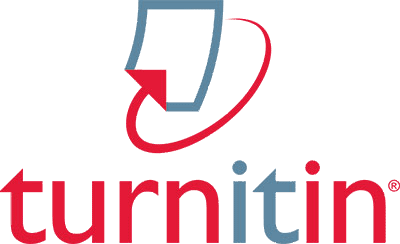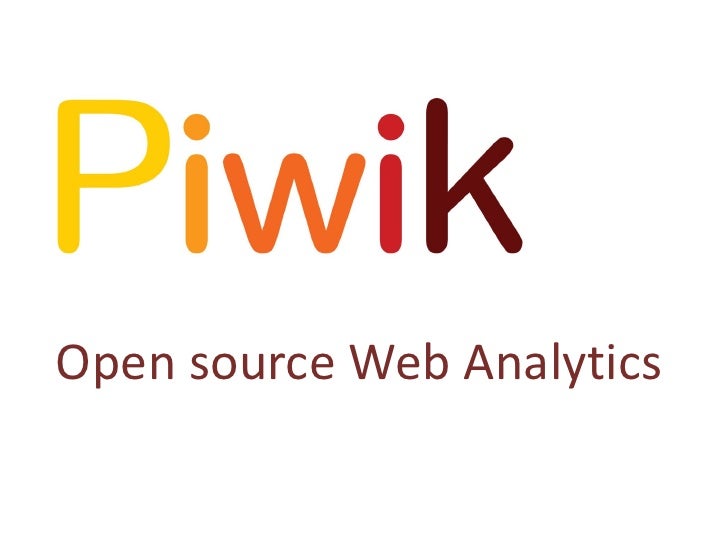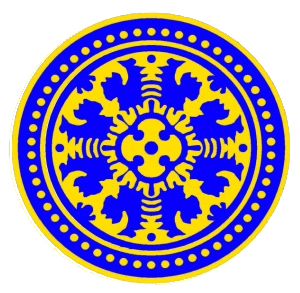Enhancing Innovation Performance by Utilizing Knowledge Management, Strategic Flexibility, and Organizational Creativity
DOI:
https://doi.org/10.24843/MATRIK:JMBK.2025.v19.i01.p06Keywords:
dynamic capabilities theory; knowledge management; strategic flexibility; organizational creativity; innovation performanceAbstract
Market turbulence compels SMEs to innovate through strategic flexibility and organizational creativity to maintain a competitive advantage. In Bali, SMEs face challenges such as a lack of organizational creativity, limited understanding of knowledge management, and the pressing need for innovation in a competitive landscape. This study aims to investigate the relationship between innovation performance and factors such as knowledge management, strategic flexibility, and organizational creativity in Bali's SMEs during the COVID-19 pandemic. While dynamic capability is crucial for organizational sustainability, research connecting strategic flexibility and organizational creativity to innovation performance remains scarce. Adopting a quantitative approach, data will be collected through questionnaires distributed to 431 UKM managers. The findings suggest that SMEs that leverage performance standards, engage in effective strategic planning, and embrace diverse ideas can make significant contributions to their industry and effectively meet customer needs.
Downloads
References
Aggarwal, V., & Kapoor, M. (2021). Demystifying the role of internal dynamics in the path of innovative competitiveness: a serial mediation model of international joint ventures. Cross Cultural and Strategic Management, 28(4), 839–866. https://doi.org/10.1108/CCSM-02-2021-0023
Andersen, T. J., Torp, S., & Linder, S. (2019). Strategic Responsiveness and Adaptive Organization: New Research Frontiers in International Strategic Management. Emerald Publishing, 276.
Andresen, F. (2021). Exploring Meso-Level Dynamic Capabilities to Address the Capability Rigidity Paradox : A Longitudinal Case Study within the German Federal Armed Forces. Springer Gabler.
Arsawan, I. W. E., Koval, V., Rajiani, I., Rustiarini, N. W., Supartha, W. G., & Suryantini, N. P. S. (2020). Leveraging knowledge sharing and innovation culture into SMEs sustainable competitive advantage. International Journal of Productivity and Performance Management. https://doi.org/10.1108/IJPPM-04-2020-0192
Bamel, U. K., & Bamel, N. (2018). Organizational resources, KM process capability and strategic flexibility: a dynamic resource-capability perspective. Journal of Knowledge Management, 22(7), 1555–1572. https://doi.org/10.1108/JKM-10-2017-0460
Barad, M. (2018). Strategies and Techniques for Quality and Flexibility (pp. 61–79). Springer.
Baral, M. M., Singh, R. K., & Kazançoğlu, Y. (2021). Analysis of factors impacting survivability of sustainable supply chain during COVID-19 pandemic: an empirical study in the context of SMEs. International Journal of Logistics Management. https://doi.org/10.1108/IJLM-04-2021-0198
Becerra, I., Fernandez, & Sabherwal, R. (2015). Knowledge Management: Systems and Processes. https://books.google.co.id/books?hl=en&lr=&id=v0e2BQAAQBAJ&oi=fnd&pg=PP1&dq=knowledge+management+theory&ots=11Gyq4s-it&sig=L9XotWcXjQJIRpKhC3S2AINf9xM&redir_esc=y#v=onepage&q&f=false
Brahmana, R. K., Setiawan, D., & Trinugroho, I. (2022). The impact of government nonmarket policy on a firm’s financial performance: a lesson from COVID-19 pandemic lockdown’s policy. Asia-Pacific Journal of Business Administration. https://doi.org/10.1108/APJBA-05-2021-0204
Chaubey, A., & Sahoo, C. K. (2021). The drivers of employee creativity and organizational innovation: a dynamic capability view. Benchmarking. https://doi.org/10.1108/BIJ-06-2021-0316
Clement, E. (2022). Cognitive Flexibilty : The Cornerstone of Learning. John Wiley & Sons, Inc.
Conway, P. (2020). Review: The Politics of Mass Digitization. Nanna Bonde Thylstrup. Journal of the Association for Information Science and Technology, 71(2), 245–247.
Creswell, J. W., & David Creswell, J. (n.d.). Research Design: Qualitative, Quantitative, and Mixed Methods Approaches.
Demir, A., Budur, T., Omer, H. M., & Heshmati, A. (2021). Links between knowledge management and organisational sustainability: does the ISO 9001 certification have an effect? Knowledge Management Research and Practice. https://doi.org/10.1080/14778238.2020.1860663
Di Vaio, A., Palladino, R., Pezzi, A., & Kalisz, D. E. (2021). The role of digital innovation in knowledge management systems: A systematic literature review. Journal of Business Research, 123, 220–231. https://doi.org/10.1016/j.jbusres.2020.09.042
Dinas Koperasi Usaha Kecil dan Menengah Provinsi Bali. (2021). PEMERINTAH PROVINSI BALI RENCANA KERJA (RENJA) TAHUN 2021.
Dinas Koperasi Usaha Kecil dan Menengah Provinsi Bali. (2022). Data Keragaan 2022 Menurut Data Akhir Desember 2021-1.
Friedl, G., & Kayser, H. J. (2018). Valuing Corporate Innovation : Strategies, Tools, and Best Practice From the Energy and Technology Sector. Management for Professionals, 114.
Gold, A. H., Malhotra, A., & Segars, A. H. (2001). Knowledge management: An organizational capabilities perspective. In Journal of Management Information Systems; Summer (Vol. 18).
Gonzalez, R. V. D., & Melo, T. M. (2017). Linkage between dynamics capability and knowledge management factors: A structural equation model. Management Decision, 55(10), 2256–2276. https://doi.org/10.1108/MD-03-2017-0180
Guo, H., & Cao, Z. (2014). Strategic flexibility and SME performance in an emerging economy: A contingency perspective. Journal of Organizational Change Management, 27(2), 273–298. https://doi.org/10.1108/JOCM-11-2012-0177
Gürlek, M., & Çemberci, M. (2020). Understanding the relationships among knowledge-oriented leadership, knowledge management capacity, innovation performance and organizational performance: A serial mediation analysis. Kybernetes, 49(11), 2819–2846. https://doi.org/10.1108/K-09-2019-0632
Hair, J. F., Matthews, L. M., Matthews, R. L., & Sarstedt, M. (2017). PLS-SEM or CB-SEM: updated guidelines on which method to use “PLS-SEM or CB-SEM: updated guidelines on which method to use.” In Organizational Research Methods, MIS Quarterly, and International Journal (Vol. 1, Issue 2).
Hartono, A., & Rafik, A. (2021). Linking open innovation, innovation barriers and performance of Indonesian firms. International Journal of Innovation Science. https://doi.org/10.1108/IJIS-10-2020-0218
Hock-Doepgen, M., Clauss, T., Kraus, S., & Cheng, C. F. (2021). Knowledge management capabilities and organizational risk-taking for business model innovation in SMEs. Journal of Business Research, 130, 683–697. https://doi.org/10.1016/j.jbusres.2019.12.001
Intellectual Property Organization, W. (2021). Global Innovation Index 2021.
Islam, T., & Asad, M. (2021). Enhancing employees’ creativity through entrepreneurial leadership: can knowledge sharing and creative self-efficacy matter? VINE Journal of Information and Knowledge Management Systems, ahead-of-print(ahead-of-print). https://doi.org/10.1108/vjikms-07-2021-0121
Kafetzopoulos, D. (2022). Talent development: a driver for strategic flexibility, innovativeness and financial performance. EuroMed Journal of Business. https://doi.org/10.1108/EMJB-02-2022-0042
Murswieck, R. (2021). Innovation Performance in the 21st Century: Designing Business Related to Cultural, Digital and Environmental Challenges. Springer Fachmedien Wiesbaden Imprint: Springer Gabler.
Nasution, M. D. T. P., Rafiki, A., Lubis, A., & Rossanty, Y. (2021). Entrepreneurial orientation, knowledge management, dynamic capabilities towards e-commerce adoption of SMEs in Indonesia. Journal of Science and Technology Policy Management, 12(2), 256–282. https://doi.org/10.1108/JSTPM-03-2020-0060
Nazari, F., Rahimipour Anaraki, A., Taghavi, S. S., & Ghasemi, B. (2020). The relationship among knowledge-based dynamic process capabilities, innovation processes and innovation performance: an empirical study of knowledge-based high-tech companies in Iran. Kybernetes. https://doi.org/10.1108/K-03-2020-0147
Ndzana, M., Cyrille, O., Mvogo, G., & Bedzeme, T. (2021). Innovation and small and medium enterprises’ performance in Cameroon. Journal of Small Business and Enterprise Development, 28(5), 724–743. https://doi.org/10.1108/JSBED-06-2020-0188
Nyuur, R. B., Brecic, R., & Debrah, Y. A. (2018). SME international innovation and strategic adaptiveness: The role of domestic network density, centrality and informality. International Marketing Review, 35(2), 280–300. https://doi.org/10.1108/IMR-11-2015-0239
Patwary, A. K., Alwi, M. K., Rehman, S. U., Rabiul, M. K., Babatunde, A. Y., & Alam, M. M. D. (2022). Knowledge management practices on innovation performance in the hotel industry: mediated by organizational learning and organizational creativity. Global Knowledge, Memory and Communication. https://doi.org/10.1108/GKMC-05-2022-0104
Pemerintah Indonesia. (2008). UNDANG-UNDANG REPUBLIK INDONESIA.
Pemerintah Provinsi Bali. (2020). Laporan Kinerja Instansi Pemerintah Provinsi Bali 2020.
Puriwat, W., & Hoonsopon, D. (2022). Cultivating product innovation performance through creativity: the impact of organizational agility and flexibility under technological turbulence. Journal of Manufacturing Technology Management, 33(4), 741–762. https://doi.org/10.1108/JMTM-10-2020-0420
Sadeghi Boroujerdi, S., Hasani, K., & Delshab, V. (2020). Investigating the influence of knowledge management on organizational innovation in higher educational institutions. Kybernetes, 49(2), 442–459. https://doi.org/10.1108/K-09-2018-0492
Saeed, M. A., Jiao, Y., Zahid, M. M., Tabassum, H., & Nauman, S. (2021). Organizational flexibility and project portfolio performance: the roles of innovation, absorptive capacity and environmental dynamism. International Journal of Managing Projects in Business, 14(3), 600–624. https://doi.org/10.1108/IJMPB-02-2020-0058
Sanchez, R., Heene, A., Polat, S., & Asan, U. (2018). Mid-Range Management Theory : Competence Perspectives on Modularity and Dynamic Capabilities. Emerald Publishing, 8.
Saunila, M. (2017). Understanding innovation performance measurement in SMEs. Measuring Business Excellence, 21(1), 1–16. https://doi.org/10.1108/MBE-01-2016-0005
Schiavon, O. P., May, M. R., & Mendonça, A. T. B. B. de. (2022). Dynamic capabilities and business model innovation in sustainable family farming. Innovation and Management Review. https://doi.org/10.1108/INMR-07-2021-0136
Sigala, M., & Chalkiti, K. (2015). Knowledge management, social media and employee creativity. International Journal of Hospitality Management, 45, 44–58. https://doi.org/10.1016/j.ijhm.2014.11.003
Slovin, E. (1960). Slovin’s Formula for Sampling Technique.
Souto, J. E. (2022). Organizational creativity and sustainability-oriented innovation as drivers of sustainable development: overcoming firms’ economic, environmental and social sustainability challenges. Journal of Manufacturing Technology Management, 33(4), 805–826. https://doi.org/10.1108/JMTM-01-2021-0018
Usman, I., Maupa, H., Idrus, M., Haerani, S., & Nurjanna, N. (2020). Moderation effect of competence of knowledge and innovation: case of Bali. Business Process Management Journal, 26(6), 1307–1327. https://doi.org/10.1108/BPMJ-06-2019-0236
Wang, Y. L., Wang, Y. De, & Horng, R. Y. (2010). Learning and innovation in small and medium enterprises. Industrial Management and Data Systems, 110(2), 175–192. https://doi.org/10.1108/02635571011020296
Wenzel, M., Rauch, M., Adegbile, A., Bogodistov, Y., Cenophat, S., Hartmann, M., Wagner, D., & Wohlgemuth, W. (2021). Dynamic Capabilities and Relationships: Discourses, Concepts, and Reflections (T. Bayón, M. Eisend, J. Koch, A. Söllner, M. Vodosek, & H.-T. Wagner, Eds.). Springer International.
Xiao, W. H., & Wang, M. (2021). A new conceptual model for assessing the role of knowledge cloud in stimulating subordinate creativity. Kybernetes. https://doi.org/10.1108/K-11-2020-0828
Xu, J., Duca, G., Ahmed, S. E., García Márquez, F. P., & Hajiyev, A. (2021). Proceedings of the Fourteenth International Conference on Management Science and Engineering Management (Vol. 2). Springer.
Yusr, M. M., Mokhtar, S. S. M., Othman, A. R., & Sulaiman, Y. (2017). Does interaction between TQM practices and knowledge management processes enhance the innovation performance? International Journal of Quality and Reliability Management, 34(7), 955–974. https://doi.org/10.1108/IJQRM-09-2014-0138
Zahra, S. A., Hayton, J. C., Neubaum, D. O., Dibrell, C., & Craig, J. (2008). Culture of Family Commitment and Strategic Flexibility: The Moderating Effect of Stewardship. Entrepreneurship Theory and Practice, 32(6), 1035–1054. https://doi.org/10.1111/j.1540-6520.2008.00271.x
Zizka, M., & Rydvalova, P. (2021). Innovation and Performance Drivers of Business Clusters : An Empirical Study. Science, Technology and Innovation Studies.
Downloads
Published
Issue
Section
License
 This work is licensed under a Creative Commons Attribution-ShareAlike 4.0 International License.
This work is licensed under a Creative Commons Attribution-ShareAlike 4.0 International License.













